Liveaboard Diving
Galapagos Liveaboard Diving Wolf Darwin Islands
We invite you to explore the world-renowned waters of the Galapagos and witness a breathtaking array of marine life
Punta Carrión
it is located on the north-western side of Santa Cruz Island. This remarkable location is a popular initial destination for many itineraries aboard liveaboard vessels in the Galapagos. This remarkable dive site offers an unparalleled opportunity for wildlife enthusiasts to observe the playful behavior of Galapagos sea lions in their natural habitat, as well as graceful eagle rays gliding by. Punta Carrión is an ideal location for underwater photography. There are numerous opportunities to capture images of remarkable quality, particularly of the friendly white-tip reef sharks that are prevalent in the area and a diverse array of vibrant fish. Furthermore, there is a possibility of observing hammerhead sharks or dolphins in the open water. The currents at Punta Carrión are moderate, making it suitable for divers of all levels. While visibility varies throughout the Galapagos, it is typically around 10 meters (33 feet), which is highly favorable.
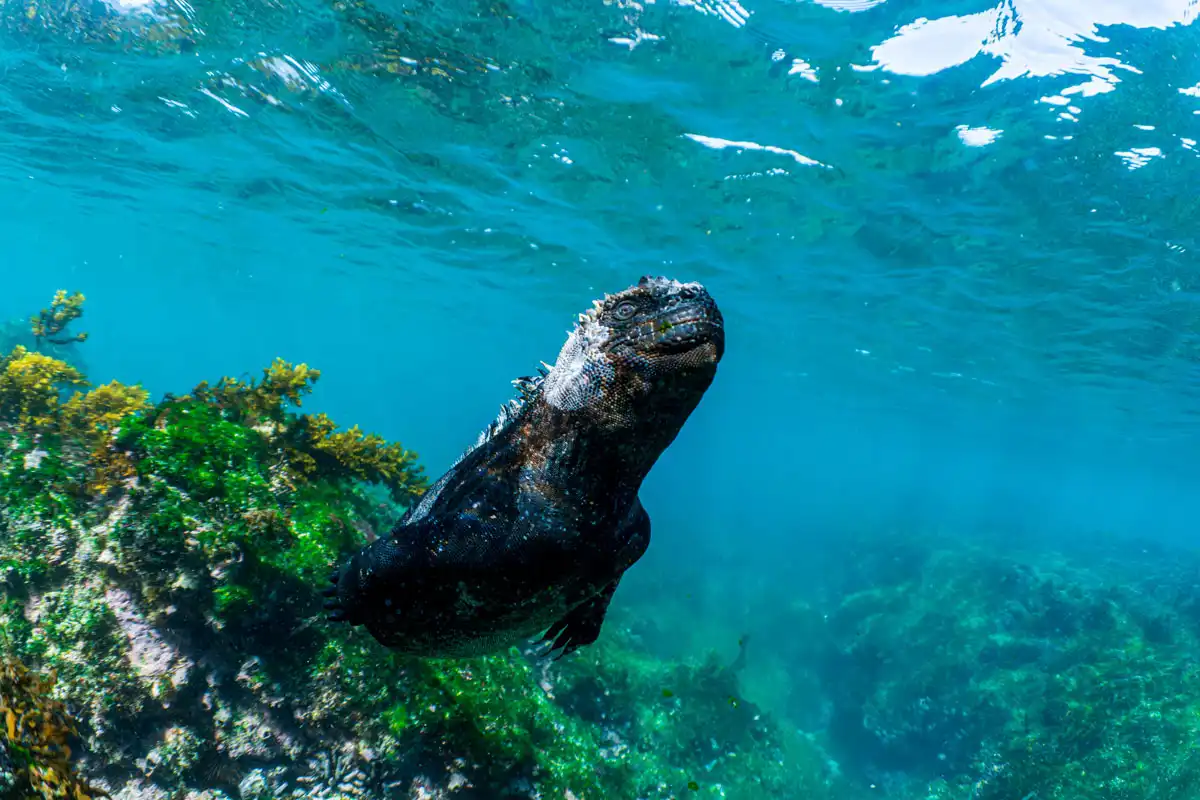
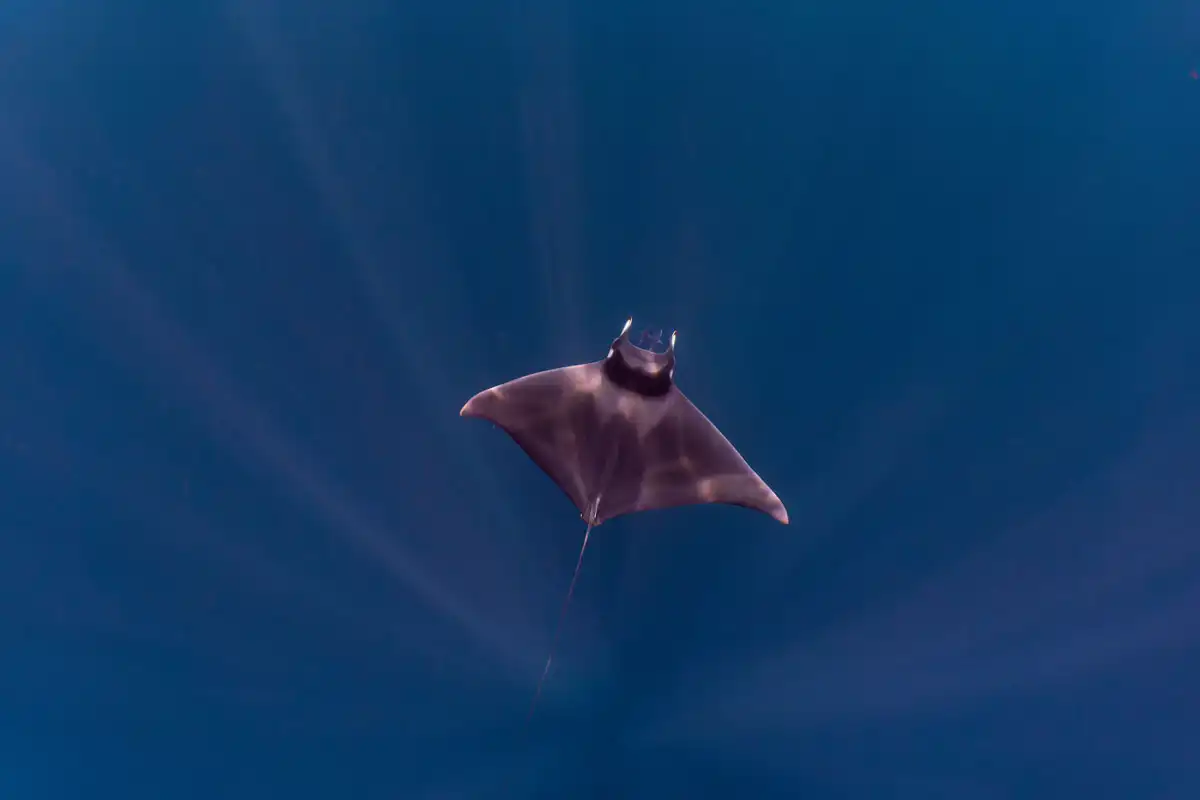
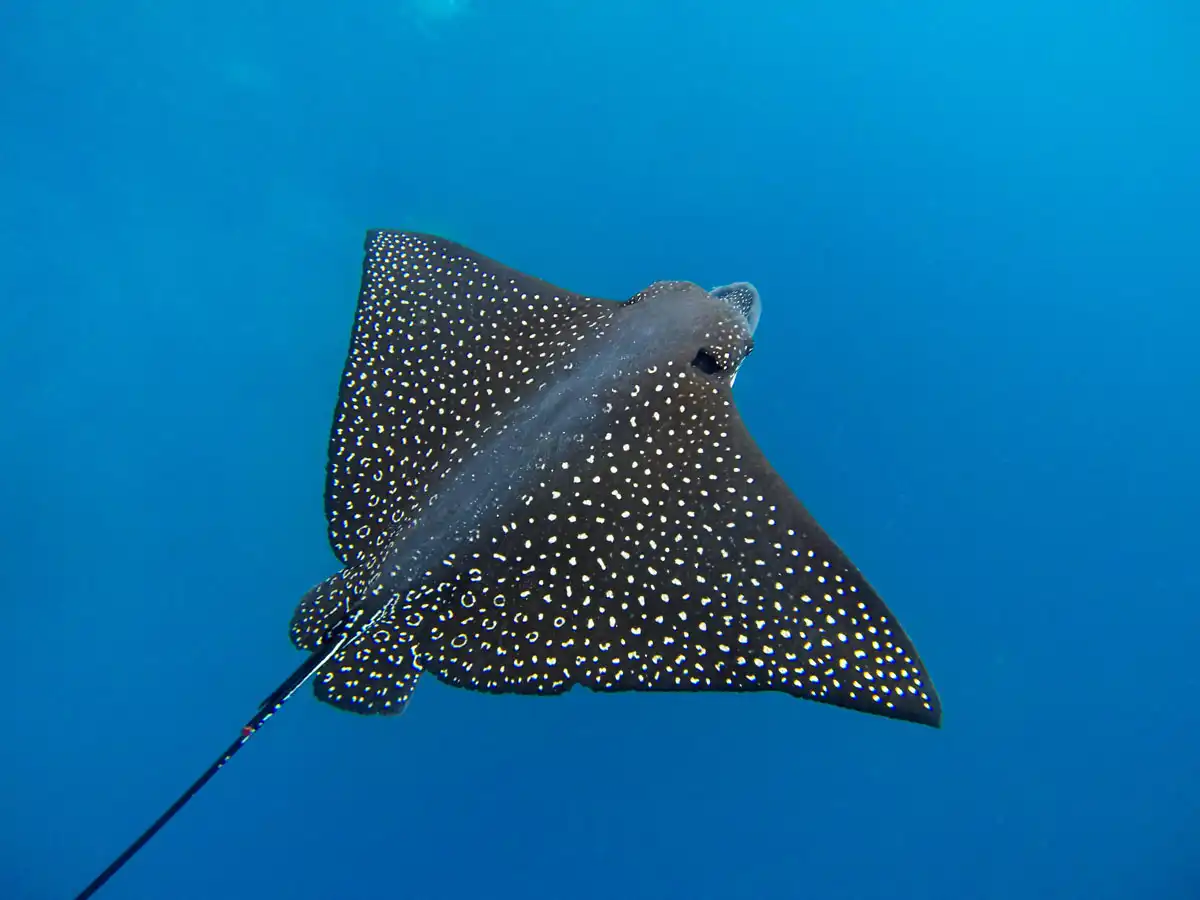
Wolf and Darwin islands
Wolf and Darwin Islands are the most remote locations in the Galapagos archipelago. They are only accessible by an overnight sailing journey on a liveaboard vessel. The islands boast a remarkable variety of avian species. Please note that there is no landing site on these islands. Due to the limited number of boats permitted to anchor at Wolf and Darwin, visitors can expect to share these waters with a small number of research vessels engaged in tagging and studying the region’s impressive pelagic species.
The waters surrounding these islands serve as a migratory route for scalloped hammerheads heading towards Cocos Island. Furthermore, divers may have the opportunity to observe silky sharks, Galapagos sharks, and manta rays in the area. Additionally, from June to November, there is the exciting possibility of encountering the world’s largest fish – the whale shark.
Please note that conditions at Wolf and Darwin can be challenging, with high swells and powerful currents. Currents may be strong enough to turn some dives into drift dives. Most liveaboards require divers to have over 50 logged dives and a minimum certification of advanced open water.
Fernandina Island, Cabo Douglas
Cabo Douglas is located on the eastern side of Fernandina Island and offers a variety of shallow dives, with depths typically below 20 meters (65 feet), providing excellent opportunities to observe fascinating marine life near the shore. The area is home to the unique marine iguana, a species found only in the Galapagos, which can be observed diving for up to sixty minutes to graze on algae along the rocky shore. Additionally, the area is home to several other notable species, including flightless cormorants, Galapagos penguins, and seahorses. Cabo Douglas offers divers the ideal setting to observe unique species. The location boasts a variety of animals that cannot be seen anywhere else in the world. This is an unparalleled opportunity to experience first-hand the remarkable brilliance and resourcefulness of nature.
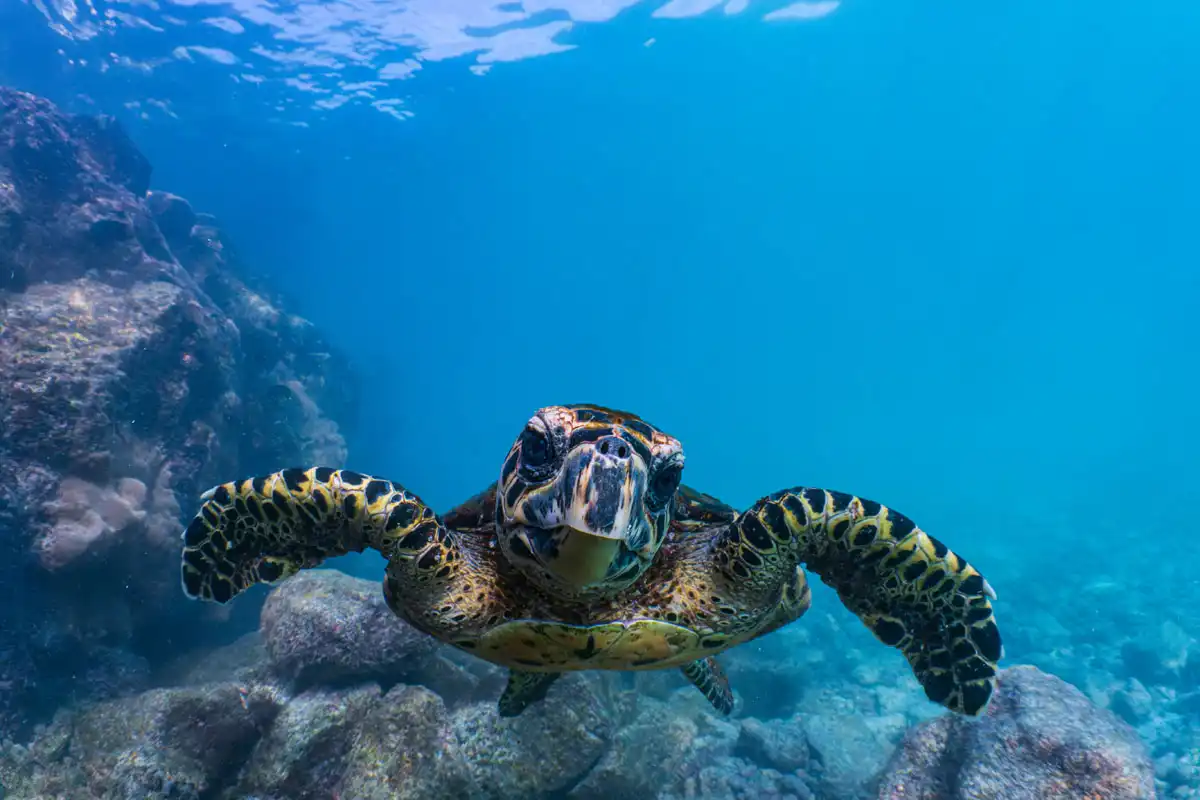
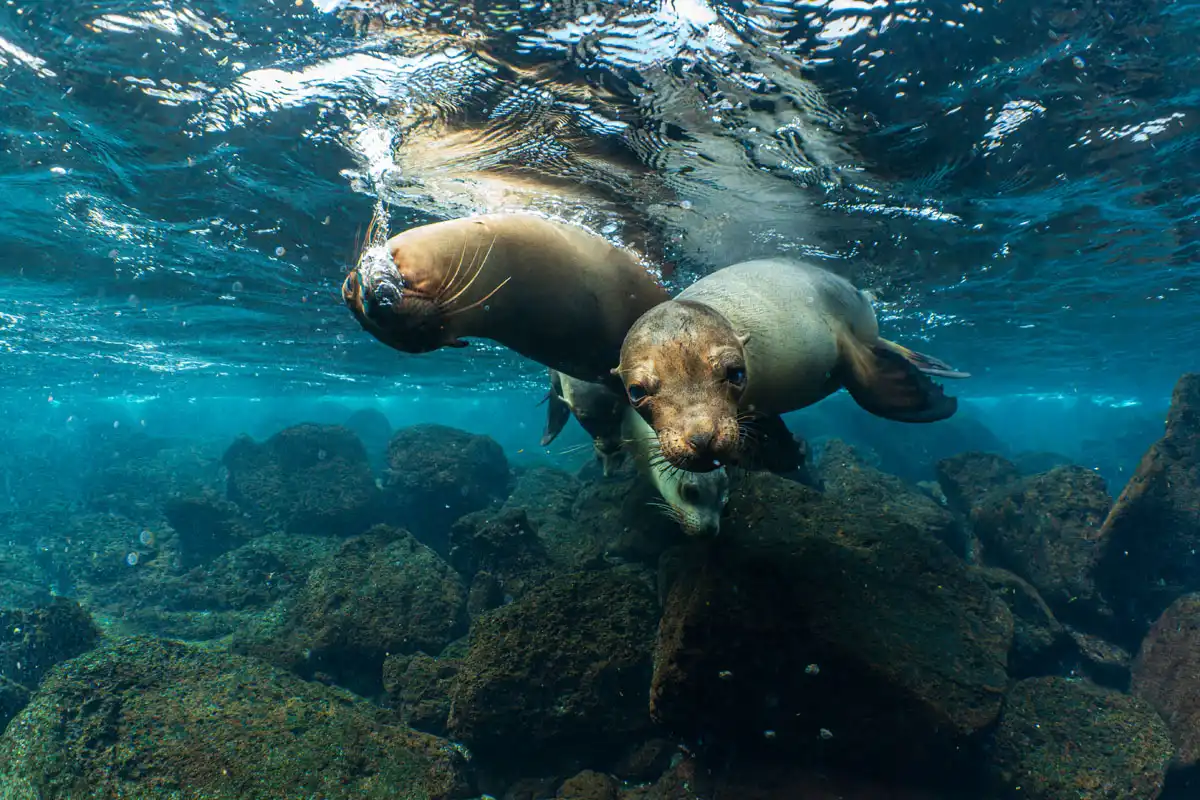
Isabela Island, Cabo Marshall
Perched on the northeastern coast of Isabela Island—the largest in the Galapagos—Cabo Marshall lies in the formidable shadow of the active Wolf Volcano. This remarkable site offers visitors a unique topography teeming with a vibrant array of marine life. Divers here can encounter sea turtles, playful sea lions, a school of barracudas, bonito tuna, and snappers. Immersing in Cabo Marshall’s deep blue waters reveals a mesmerizing world where giant manta rays glide gracefully, embodying the elegance of the ocean. The area is a sanctuary of biodiversity, where colorful corals and tropical fish form a vivid underwater landscape, showcasing the Galapagos’ natural splendor at its finest.
Isabela Island, Punta Vicente Roca
Nestled along the west coast of Isabela Island, the largest of the Galapagos Islands, offers an enchanting underwater wall adorned with vibrant soft corals and sponges that cascade down over 30 meters (90 feet). Near the shore, visitors may observe playful sea lions and curious Galapagos penguins, which add to the charm of the experience. The true allure of this site, however, is the elusive Mola Mola, or sunfish. Drawn by the nutrient-rich Cromwell current, these magnificent, oddly shaped giants glide through the blue near the wall or gather at their cleaning stations. Divers are advised to approach with care, as these shy Molas are easily spooked. However, a gentle approach promises an unforgettable encounter.

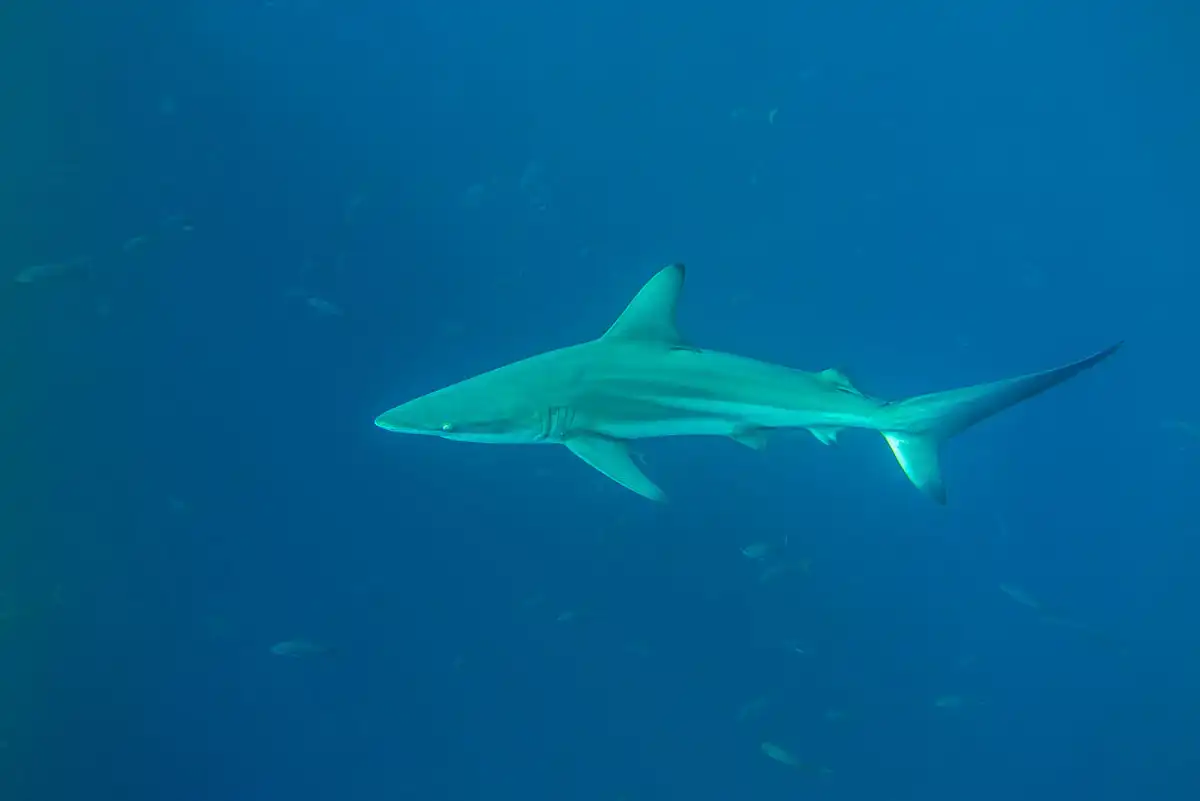
Cousin Rock
The islet is a small volcanic formation located off the east coast of Santiago Island. The underwater landscape, comprising a reef and a wall of terraced structures descending to the seabed, offers an ideal setting for underwater photography, featuring black coral, sponges, and sea fans. Furthermore, visitors can observe large schools of salema fish, green sea turtles, rays, and seahorses. The site is typically characterized by calm waters with minimal currents, offering a diverse range of reef and wall diving opportunities.
FAQ:
Best time to dive in the Galapagos Islands
- Diving in the Galapagos is a year-round activity, with two distinct seasons.
- The warm season is from December to May, with water temperatures of approximately 23-25°C (75-80°F). The conditions are calmer, and the currents are less pronounced at this time of year. This is an excellent time to observe large numbers of hammerheads, silky sharks, and Galapagos sharks.
- The cooler season is from June to November, with water temperatures dropping to 16-18°C/60-65°F. Please be aware that rougher sea conditions and strong currents may present a challenge for those diving in this area.
- The cooler season is an ideal time to observe whale sharks, which can be found in the vicinity of Darwin and Wolf Islands. It is worth noting that the islands continue to host significant populations of hammerhead sharks, along with occasional sightings of silky and Galapagos sharks.
- Visibility is typically between 10 and 21 meters (30 to 70 feet), and conditions may be challenging due to the prevalence of surges and currents in the area.